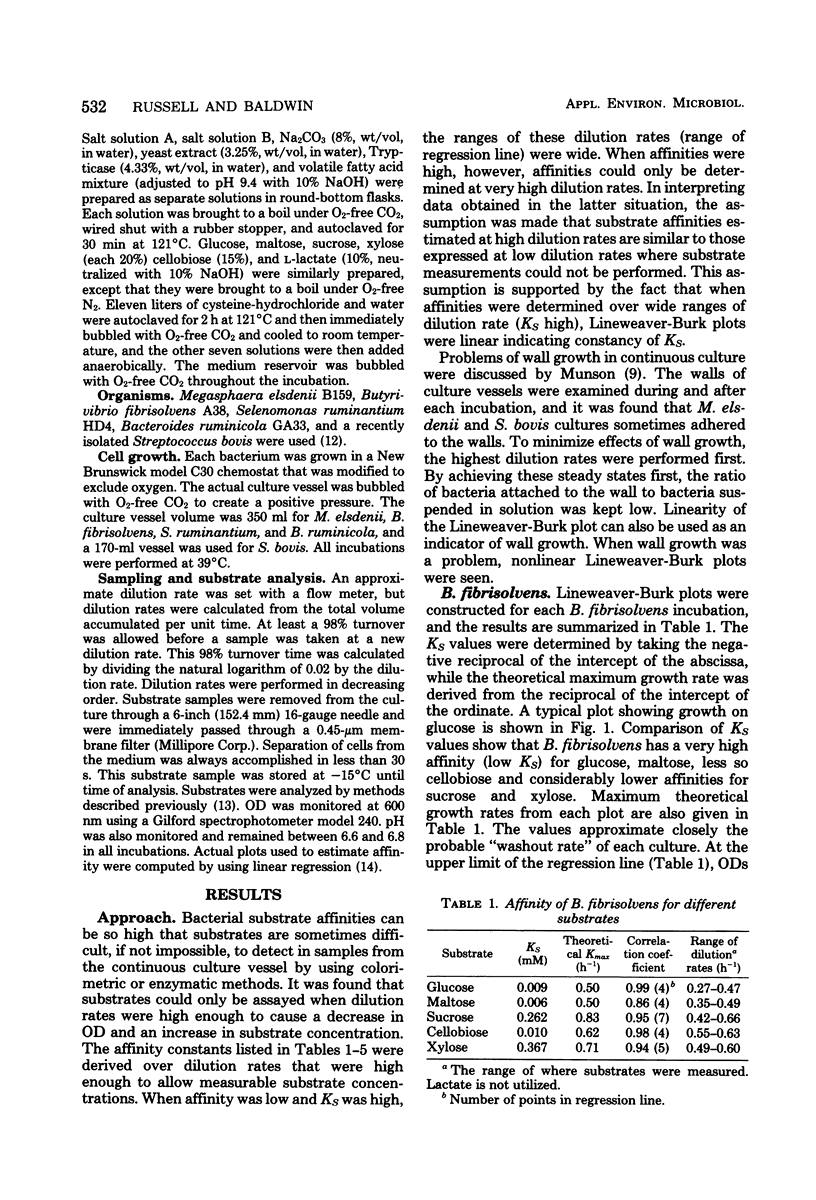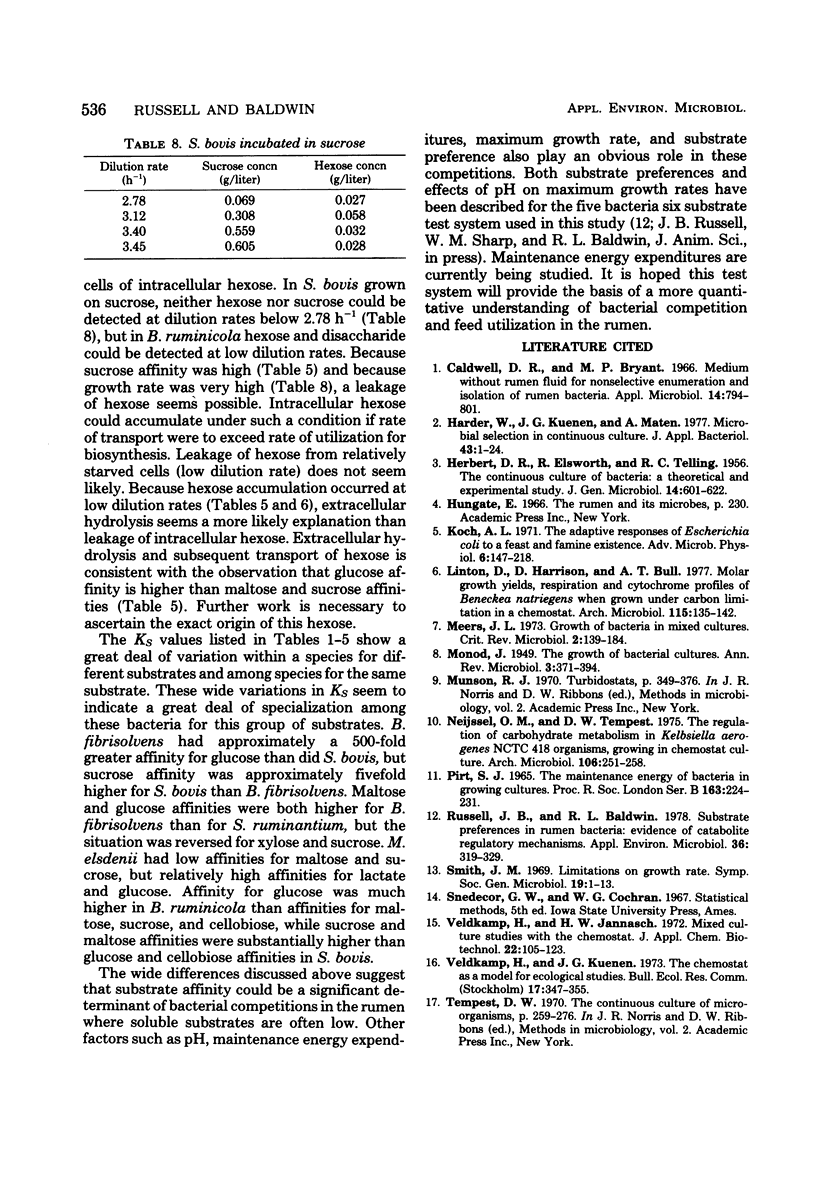Abstract
Five rumen bacteria, Selenomonas ruminantium, Bacteroides ruminicola, Megasphaera elsdenii, Streptococcus bovis, and Butyrivibrio fibrisolvens were grown in continuous culture. Estimates of substrate affinities were derived from Lineweaver-Burk plots of dilution rate versus substrate concentration. Each bacterium was grown on at least four of the six substrates: glucose, maltose, sucrose, cellobiose, xylose, and lactate. Wide variations in substrate affinities were seen among the substrates utilized by a species and among species for the same substrate. These wide differences indicate that substrate affinity may be a significant determinant of bacterial competition in the rumen where soluble substrate concentrations are often low. Growth of these bacteria in continuous culture did not always follow typical Michaelis-Menten kinetics. Inflated theoretical maximum growth rates and non-linear Lineweaver-Burk plots were sometimes seen. Maintenance energy expenditures and limitation of growth rate by factors other than substrate concentration (i.e., protein synthesis) are discussed as possible determinants of these deviations.
Full text
PDF





Selected References
These references are in PubMed. This may not be the complete list of references from this article.
- Caldwell D. R., Bryant M. P. Medium without rumen fluid for nonselective enumeration and isolation of rumen bacteria. Appl Microbiol. 1966 Sep;14(5):794–801. doi: 10.1128/am.14.5.794-801.1966. [DOI] [PMC free article] [PubMed] [Google Scholar]
- HERBERT D., ELSWORTH R., TELLING R. C. The continuous culture of bacteria; a theoretical and experimental study. J Gen Microbiol. 1956 Jul;14(3):601–622. doi: 10.1099/00221287-14-3-601. [DOI] [PubMed] [Google Scholar]
- Harder W., Kuenen J. G. A review. Microbial selection in continuous culture. J Appl Bacteriol. 1977 Aug;43(1):1–24. doi: 10.1111/j.1365-2672.1977.tb00717.x. [DOI] [PubMed] [Google Scholar]
- Koch A. L. The adaptive responses of Escherichia coli to a feast and famine existence. Adv Microb Physiol. 1971;6:147–217. doi: 10.1016/s0065-2911(08)60069-7. [DOI] [PubMed] [Google Scholar]
- Linton J. D., Harrison D. E., Bull A. T. Molar growth yields, respiration and cytochrome profiles of Beneckea natriegens when grown under carbon limitation in a chemostat. Arch Microbiol. 1977 Nov 18;115(2):135–142. doi: 10.1007/BF00406366. [DOI] [PubMed] [Google Scholar]
- Neijssel O. M., Tempest D. W. The regulation of carbohydrate metabolism in Klebsiella aerogenes NCTC 418 organisms, growing in chemostat culture. Arch Microbiol. 1975 Dec 31;106(3):251–258. doi: 10.1007/BF00446531. [DOI] [PubMed] [Google Scholar]
- Pirt S. J. The maintenance energy of bacteria in growing cultures. Proc R Soc Lond B Biol Sci. 1965 Oct 12;163(991):224–231. doi: 10.1098/rspb.1965.0069. [DOI] [PubMed] [Google Scholar]
- Russell J. B., Baldwin R. L. Substrate preferences in rumen bacteria: evidence of catabolite regulatory mechanisms. Appl Environ Microbiol. 1978 Aug;36(2):319–329. doi: 10.1128/aem.36.2.319-329.1978. [DOI] [PMC free article] [PubMed] [Google Scholar]


